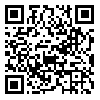BibTeX | RIS | EndNote | Medlars | ProCite | Reference Manager | RefWorks
Send citation to:
URL: http://irj.uswr.ac.ir/article-1-539-en.html

 , Moslem Arian1
, Moslem Arian1 
 , Omid Massah1
, Omid Massah1 
 , Naser Heidari *2
, Naser Heidari *2 
 , Mohammad Jalalvand3
, Mohammad Jalalvand3 
 , Masood Ahovan4
, Masood Ahovan4 

2- Shahid Beheshti University, Tehran, Iran.
3- Shiraz University, Shiraz, Iran.
4- Allameh Tabataba'ei University, Tehran, Iran.
Objectives: The current study was designed to examine the association between the emotional expressiveness style and addiction potential among male high school students.
Methods: A cross-sectional study was conducted on 180 male high school students that had been selected through multi-stage random sampling from Karaj city’s at-risk high schools. The research tools consisted of: a) the researcher-made demographic questionnaire, b) addiction potential scale (APS), c) emotional expressiveness questionnaire (EEQ). Pearson’s correlation coefficient and multivariate analysis of variance (MANOVA) were used to analyze data.
Results: Based on the results, emotional expressiveness and its components were negatively and significantly associated with addiction: ‘expression of positive emotion’ (P=0.001), ‘expression of negative emotion’ (p=0.001), and ‘expression of intimacy’ (P=0.001). ‘Expression of positive emotion’ plays a more significant role in predicting addiction potential. Addiction potential was significantly associated with familial economic status (P=0.024).
Discussion: On the whole, our results underscore the significance of emotions and emotional expressiveness in predicting addiction potential in adolescents. Therefore, it is essential to educate adolescents during their schooling years to prevent this phenomenon.
Received: 2015/10/1 | Accepted: 2015/11/17 | Published: 2015/12/1



